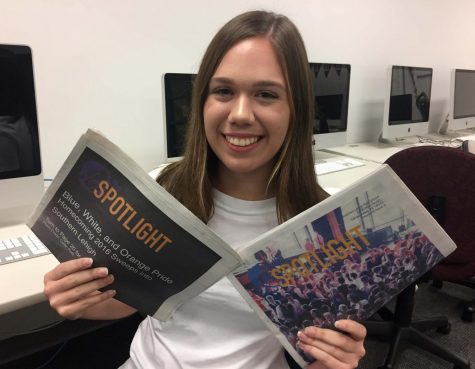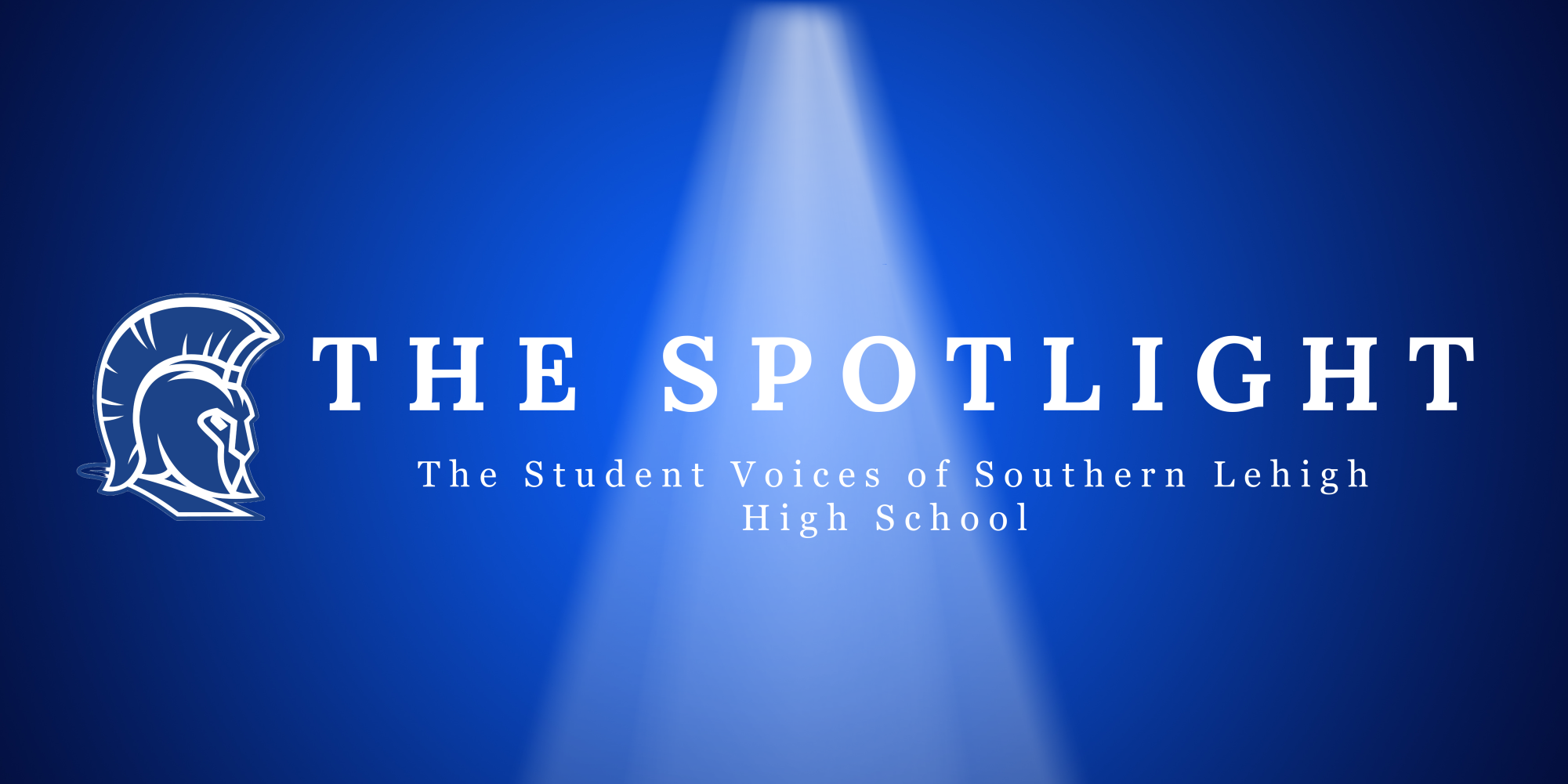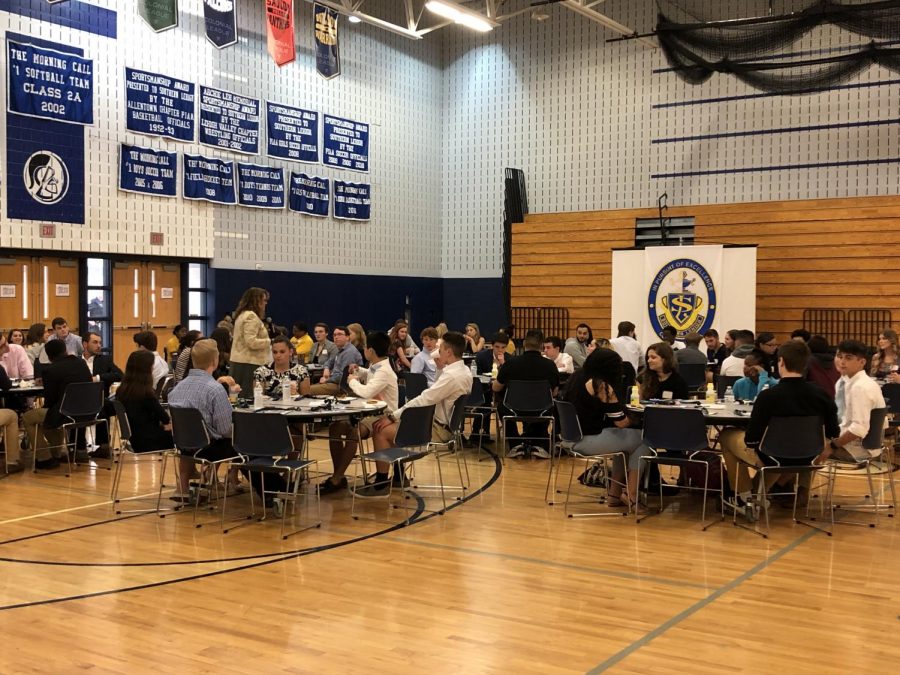PA Attorney General Shapiro Talks Safe2Say, Mental Health with SLHS
Shapiro’s staff met with students from several Lehigh Valley area high schools in smaller roundtable discussions in the SLHS gymnasium.
On May 20, 2019, Pennsylvania Attorney General Josh Shapiro came to Southern Lehigh High School to discuss mental health, bullying, and the Safe2Say program with students from around Lehigh County. Southern Lehigh High School hosted other schools, including Dieruff High School, William Allen High School, Emmaus High School, and Parkland High School.
Upon arrival, each student found a mini notebook, a lanyard, and folder from the Attorney General placed in their seats. The day’s events started in the gym, where students engaged in small group discussions and completed icebreakers with Shapiro’s staff. After getting to know each other better, discussion about sensitive issues came easier.
“Today was a really great opportunity to create dialogue with not only our teachers, but with important people, like the [attorney general],” senior participant Cameron McColgan said. “[It’s about] creating dialogue in amongst different students from different schools with different backgrounds, and understanding not only [the effects of] bullying…but also understanding the underlying issues, like mental health.”
Attorney General Shapiro sat in the front of the cafeteria with five student panelists from the schools. He led the conversation and asked audience members to share their experiences and suggestions.
The discussion was centered on mental health, as students explained it was the cause of bullying and other school-wide issues. Overall, each person’s experience with mental health with themselves, their peers, or their close friends varied.
“I thought today was a great experience to get to learn about everyone’s point of view and to really bring that all together in one big culmination,” sophomore participant Grant Hagenbuch said.
Some students suggested a peer-mentor for those who were struggling, while others suggested an adult figure, like a coach or a designated mental health counselor. In our interview, Attorney General Shapiro told the Spotlight staff that he is planning to ask the PA state legislature for more funding for mental health personnel.
Shapiro’s successful platform is based on combating crime, upholding individual rights, and protecting consumers. Some of his top priorities include protecting students, veterans, small businesses and consumers from scams and fraud, implementing a comprehensive integrity agenda to ensure people from across the Commonwealth are heard and have faith in the justice system
In his current position, he has increased transparency by regularly publishing reports about pressing issues, and promoted diversity by hiring the office’s first Diversity and Inclusion Officer. Most recently, he launched a lawsuit that holds big pharmaceutical companies accountable for their actions in the opioid epidemic.
Q: Where do you draw inspiration from to tackle these challenges? Why do you do roundtable discussions?
A: “My fundamental responsibility as the [Attorney General], the chief law enforcement officer principally, is to keep people safe. I take that responsibility very seriously, particularly when it comes to our kids. I’ve said that before, as the AG and the dad of four school-aged kids. School safety, the safety of students is really important. And so I began this listening tour thinking that the conversation would focus more around bullying and violence in school. And instead, we’ve had a number of these, it’s focused more on mental health issues. My inspiration is to try to keep people safe in their communities, in their minds, in their schools.”
Q: Tell us more about the overlying themes of the roundtable discussions.
A: “My expectation, when we did the first one, I thought for sure that students would not say a word, and I was completely wrong about that. In fact, every stop we’ve had students [do] 90% of the talking, which is the way it should be. We want to listen and learn. I’ve been amazed at how students have been able to open up, be honest. I’ve been struck by the prominence of mental health issues being discussed. I’ve also been struck by how student have articulated the need for more personnel in their schools to tackle these issues. I heard that loud and clear, and one of the things that I’m going to be asking the legislature for is… a fund established that schools can draw upon specifically to fund mental health counselors, teachers, aids to help students deal with these issues. Loud and clear I’ve heard that message, and I want to make sure that lawmakers in Harrisburg know how students are feeling, and if I can be their voice and get some resources to these schools that are needed, I will.”
Q: How will these roundtable discussions affect school administration and staff?
A: “The fact that your superintendents, principals, and teachers were willing to have this conversation, that’s a sign of strength on their part. And the fact is that they need to hear this stuff too, and hopefully, as they go through their summer planning for the fall, they will be incorporating what the students said into the work that they do for [their] school year.”
Q: What are the short term goals of Safe2Say? What are the long term goals?
A: “Interestingly enough, the legislature funded Safe2Say as a means to deal with school shootings and violence in our schools. And that is no doubt critically important, but what we have found in the 25,000 calls or so that we’ve gotten… there have been a lot more calls about mental health than violence. My short-term goals were standing it up, getting it to work, and getting students to buy in. Clearly, they have. Now, it’s taking the information that we’ve learned there not only to keep that individual student safe or that individual school safe, but now having the policy follow it, like counselors in every school district.”

Senior Bridgette Lang is a third-year staff reporter and former features editor, now serving as opinion and our world editor for the Spotlight. In addition,...
Senior Marc Ramson is a first-year staff reporter for the Spotlight. He enjoys writing editorials and expressing his opinions on controversial topics....


